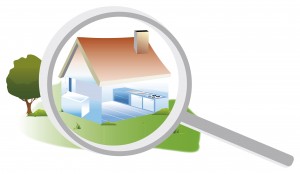Protecting Children from Lead in Soil
Tips to prevent exposure and how to test for lead-based paint contamination in soil.
Lead poisoning is a problem for both children and adults. It can cause permanent problems in young children  such as health, learning, and behavior issues and in adults it can be related to high blood pressure and kidney damage. Lead-contaminated soil continues to be a hazardous source of lead exposure for young children, especially if they play outside. Lead has staying power, it does not biodegrade, or disappear over time, but remains in soils for thousands of years.
such as health, learning, and behavior issues and in adults it can be related to high blood pressure and kidney damage. Lead-contaminated soil continues to be a hazardous source of lead exposure for young children, especially if they play outside. Lead has staying power, it does not biodegrade, or disappear over time, but remains in soils for thousands of years.
Sources of Lead in Soil
Where is the lead coming from? There are a number of possible sources.
- If a home was built before 1978, it is more likely to have lead-based paint, which over time could have contaminated the surrounding soil. In 1978, the federal government banned consumer uses of lead-based paint. Some states banned lead paint earlier and in some states, lead based paint continued to be sold and applied well into the 90’s.
- It is estimated that leaded paint was used on 75% of houses built before 1978.
- Lead-based paint is still present in millions of homes, normally under layers of newer paint.
- If the paint is in good shape, the lead-based paint is usually not a problem.
- However, chalking, leaching, flaking, weathering, scraping, sanding, and sandblasting of leaded paint has resulted in lead deposits in soil near the base of these houses, which create a “halo” of lead contamination.
- Deteriorating, lead-based paint (peeling, chipping, chalking, cracking, damaged, damp) is a hazard and needs immediate attention.
- Lead paint is only one source for the lead in soil. Soil can also become contaminated from widespread use of leaded gasoline in cars. Effective in January 1, 1996, leaded gasoline was banned by the Clean Air Act for use in new vehicles other than aircraft, racing cars, farm equipment, and marine engines.
- While there are a few additional sources for lead contaminated soils, it is important to remember that lead can be naturally occurring and can be found in high concentrations in some areas.
How to Protect Children Playing Outdoors
- Create a Safe Play Area at Home
- Set up a sandbox as a safe play area.
- Buy fresh sand from a building supply or landscape-supply company. Sand that has come from a demolition site could be contaminated with lead.
- Cover the sandbox when it is not being used. This will protect the sand from animals and from contamination with lead paint chips and/or dust.
- Important Tips
- Children should not play on bare soil, since it may be contaminated with lead.
- Soil and lead dust can easily get on children’s hands and toys, and then into their mouths.
- Lead contaminated dust can be inhaled.
- Children should play in grassy areas of the yard, or where there is other appropriate ground cover.
- If the grass under a swing set wears away, cover the area with sand. This provides a soft landing for falls and prevents children from kicking up contaminated soil when their feet drag under the swing.
- Play areas should always be located away from buildings and fences with chipping or peeling paint.
- Playground Precautions
- Older playground equipment can still contain old lead-based paint, and artificial turf and playground surfaces made from shredded rubber can contain lead.
- Monitor children to ensure young children do not eat shredded rubber or put their hands in their mouth before washing them to avoid ingesting any lead.
- Handwashing is a very important habit for children for many reasons but very important when they return to the indoors after having a possible exposure to lead while playing.
- Take off shoes when entering the house to prevent bringing lead contaminated soil in from outside.
- Plant grass on areas of bare soil or cover the soil with mulch or wood chips.
A few simple precautions are important to protect children when playing outside. If you are concerned that your child has been exposed to lead in soil, contact your child’s health care provider. The best way to tell if your child has been exposed is with a blood lead test. If your child has been exposed your health care provider can recommend appropriate follow-up actions.
https://www.epa.gov/lead/protect-your-family-sources-lead#older
https://epa.ohio.gov/monitor-pollution/pollution-issues/learn-about-lead
For Turn Key’s services for more on how to test for lead contamination from lead based paint.


